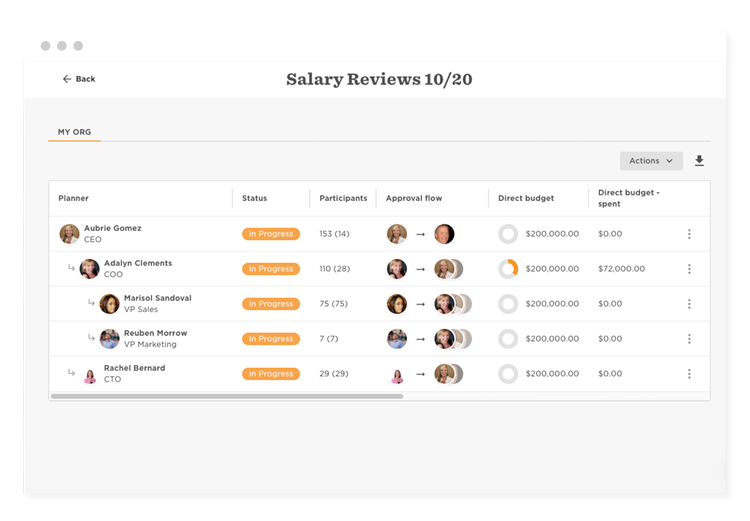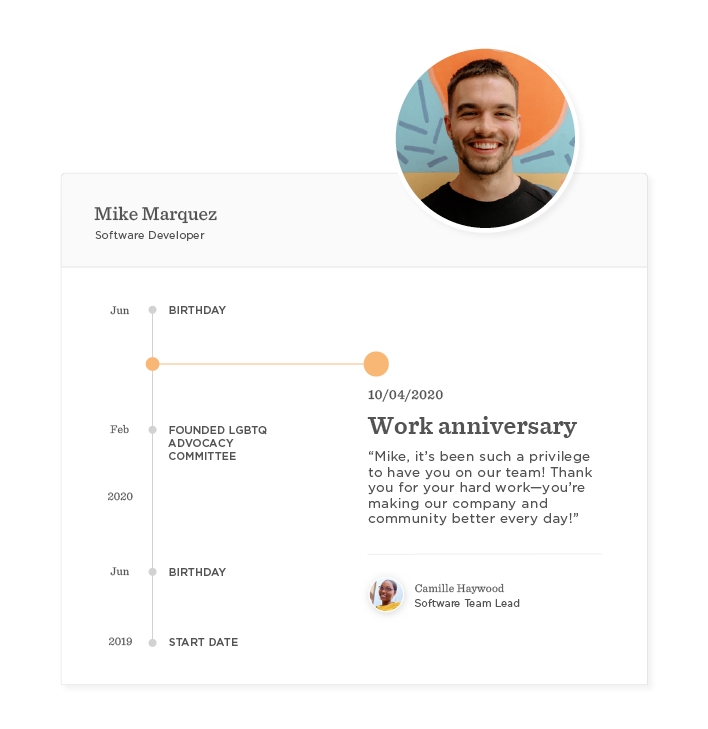Introduction
“Paying good wages is not charity at all—it is the best kind of business.” This phrase, attributed to business magnate Henry Ford, may have been uttered one hundred years ago, but the statement remains valid today. A robust model for business success involves connecting compensation to individual and organizational performance. Companies that align their strategic expectations with compensation plans inspire and drive outstanding employee performance.
In the past, many organizations based compensation on tenure. That may have worked during an era when employees stayed with an employer for decades; however, in today’s employment environment, people typically don’t stay with one organization for their entire career. As of January 2018, the Bureau of Labor Statistics reported that the median time employees had been with their current employer was 4.2 years
Current data from PayScale tells the story of how companies are approaching compensation beyond tenure:
- Retention, recruitment, and in-demand, job-specific skills are the top reasons for pay strategy adjustments
- 73% of organizations budget for variable/incentive pay, with bonuses being most common
- 70% of organizations have a compensation strategy or are working on one
When building a compensation strategy or updating an existing one based on organizational growth, it’s imperative to consider how compensation connects to performance, and how that connection can inspire your employees to drive the organization forward.
Connecting compensation to employee performance
Regardless of strategic details, many companies tie compensation to performance, 75% of companies surveyed by Salary.com said that’s their approach. Before looking at how compensation impacts other elements of an HR strategy—such as recruiting, retention, and engagement—let’s consider what compensation and performance include.
Compensation
Various factors contribute to your ability to recruit and retain the employees you need to drive your business forward. An important factor is the compensation you offer. “In a shrinking labor market, getting compensation right is a critical component of any strategic approach to talent acquisition and retention,” according to Payscale.
Having a strategic compensation approach allows organizations to attract quality talent, especially when there are more open jobs than employees to fill them. In a tight labor market, If compensation doesn’t meet a candidate’s expectations, they will look for a better offer. Even if you’re able to attract an employee to join your organization, a competitive compensation strategy is required to keep your workforce satisfied. To retain employees for longer, and avoid the high costs of turnover, you need to continue to engage them by offering a desirable total pay package.
Compensation may be the foundation for an employee’s rate of pay—however, it’s essential to remember that compensation is not just a paycheck. A strategic total pay package includes all the benefits employees receive from a company. In addition to salaries, compensation might also include:
- Bonuses
- Commissions
- Health insurance benefits
- Retirement investments,
or other company perks (transportation programs, gym memberships, product discounts) that an employee receives from an employer.
The Society for Human Resource Management (SHRM) recommends following a three-step process to craft and implement a strategic compensation plan:
- Determine the sources of external market data
- Conduct market analysis, develop pay structures
- Calculate their cost
As part of the process, employers should evaluate and analyze elements such as market location, industry, workforce size, and healthcare costs. To get an idea of standard salaries, many employers purchase competitive salary data or reach out to peer organizations to gather benchmarks. Industry or geographic surveys can also help determine competitive compensation packages.
Performance
In human resources, the word “performance” is almost always followed by the word “management.” The world of work focuses on managing and driving employee performance to help the organization achieve its goals. It’s nearly impossible for an organization to succeed if they don’t address both good and bad performance.
Performance is defined as the execution of an action. In the context of employment, performance describes how an employee completes job tasks. Each job has a set of requirements—knowledge, skills, and abilities—which someone must possess to perform well.
Until recently, conversations about employee performance were often reserved for the annual review. Organizations have realized that delaying feedback for a year not only makes it hard to implement changes. Even with yearly reviews in place, many organizations are now asking managers to conduct more frequent performance conversations to provide timely, relevant, and actionable feedback.
Continuous performance conversations are also driven by today’s workforce, which has a desire for meaningful feedback. According to a study conducted by Gallup, employees who have regular meetings with their managers are nearly three times as likely to be engaged than employees who don’t regularly connect with managers.
Employers need practices that enable productivity, feedback, and engagement while ensuring employees are effectively compensated for their work to adapt to this approach. The important relationship between performance and compensation is what we’ll consider next.

Address compensation and performance as part of your HR strategy
Compensation is a critical component of any HR strategy. With the right approach, you can use compensation to attract top talent, retain employees who support your mission, and develop a workforce that drives your mission forward.
Each organization’s compensation approach should ultimately match the conditions and requirements for its business environment, budget, and key motivators of its desired workforce.
For example, a tech organization with operations in urban areas with a high demand for engineers may require a strategy that enables them to pay above market rate to secure the engineering talent they need to operate. Meanwhile, a top employer with operations in smaller communities may have lower turnover and lower cost of living requirements, which allows them to remain competitive, even with lower rates of pay.
As you assess what works for your organization and your employee base, start by evaluating the variety of compensation methodologies that exist.
Transparent compensation framework
One option for a compensation strategy is complete transparency between HR, managers, and employees. Some might fear this level of transparency due to the long-held assumption that when employees talk about their pay, it creates problems. But adopting a transparent pay model hasn’t created issues for the social media management company Buffer.
Since 2013, the San Francisco-based firm has brought the pay discussion out in the open. They have a system of levels and steps for each role “to make sure teammates can develop in a variety of ways.”
As part of its transparent strategy, Buffer has a public salary schedule that includes data around levels, steps, and cost of living tiers. The company is also very open about their formula and is committed to reviewing comparable compensation and using data from experts. Why has Buffer adopted this transparent method? They explain
“Teammates no longer have to wait for a promotion to the next level in their career framework to see a raise. Raises can happen more organically as a way to reward teammates for their contribution to the team. The idea is that teammates can have a clear path for compensation and recognition without waiting several years for a promotion.”
Buffer isn’t the only organization adopting a transparent pay model. One reason organizations implement this model is that if employees know their compensation is at market rate, they’ll spend less time worrying and more time focused on work.
In one study, reports Business Insider, researchers at Tel Aviv University shared pay information with some student subjects, while keeping it secret. They found that the students who did not have access to salary information performed worse than those who were informed.
As the trend toward pay transparency continues to rise, organizations need to examine how transparency and performance might intersect within their compensation strategy.
Team-based compensation incentives
Another approach to compensation involves the use of team-based incentives. A survey from PwC found that team-based bonuses were used in many organizations to encourage collaboration and drive results. In looking at the structure for these compensation methods, the researchers found two essential design considerations: team size and team composition. They found that the return on investment for team-based compensation is less effective with larger teams.
Basing pay on team performance is ideal for teams with fewer than five employees, as 60% of people said they were demotivated with more than five team members, and 90% were demotivated in a team of over ten. The research also indicated that colleagues who were familiar with each other had better results with this team-based compensation model.
For an organization that wants to encourage staff members to work together in a collaborative environment to achieve group goals, the team-compensation model can be useful, reports HR Daily Advisor. If the right structure is in place, the approach can establish a sense of project ownership and partnership between all members of the team.
Individual performance-based compensation
Many organizations use a compensation strategy based on individual performance ratings or assessments. In this model, employees receive a percentage increase, bonus, or incentive, based on their demonstrated achievements. Typically, performance assessments and compensation increases occur during the same time of year, but the growing trend is to discuss performance and compensation separately.
The software firm Adobe updated its performance-based compensation approach when they noticed a yearly spike in employees leaving the company after each annual review cycle, according to SHRM. To address this unwelcome turnover trend, the team at Adobe created a new system which requires quarterly conversations between managers and employees, instead of a single annual review. These quarterly check-ins provide a chance to talk about ongoing goals and expectations and professional growth and development without including the pressure of pay in the conversation.
This type of ongoing feedback is essential to help reinforce and redirect employee behavior. Frequent and timely conversations also make it easier for employees to connect how their work directly impacts the organization’s results. That connection can ultimately serve to inspire and drive immediate performance improvements.
When performance conversations happen frequently, an annual compensation conversation becomes a time when managers focus on pay, celebrate milestones, and highlight organizational performance. With one compensation discussion and ongoing performance conversations, employees already know where they stand for pay adjustments. In this model, they’ve received continuous performance feedback, which is reflected in their compensation. It creates a clear, easy-to-understand connection between performance, compensation, and results.
5 steps to connecting performance and compensation
To retain talent and address current business needs, organizations take various approaches to connecting performance and compensation. According to the 2020 Compensation Best Practices report, organizations are rewarding top talent performance in multiple ways, the top five being:
- Higher base pay increase than overall employees
- Promotions
- Bonus or incentives (no formal plan)
- Career development opportunities
- Goal-based bonuses
Connecting performance to compensation doesn’t happen without some planning. Start with the following five steps to create a framework that works for your organization.
1. Identify the metrics.
You need to determine the parameters on which performance will be measured. Will there be a rating scale? Who will rate employee performance: their manager, 360° feedback from peers, or others? Are the metrics based on subjective assessment, outcomes achieved, or both? The parameters need to be clear for management and employees to avoid confusion that can quickly lead to broken trust.
2. Establish time-frames
Just as methods of measurement need to be clear, so do the timelines for measurement. Performance data should be available to track progress, use for decision-making, and to evaluate results. Identify a compensation and performance assessment cycle that makes sense with your business and helps you drive performance.
3. Track performance against goals
Goals are a critical part of setting performance expectations. Managers should work with their teams to set goals and then track progress and performance against those goals. Ideally, your organization has an HR information system where managers can capture the goals, share them with employees, and continue to check in on those goals throughout the year.
4. Include recognition and rewards
Performance isn’t just about what employees earn. They are also looking for intrinsic rewards—a sense of purpose, autonomy, connection. Make sure your compensation and performance strategies include a focus on recognizing employees for everything they contribute. Recognition for contributions can positively impact your bottom line— 70% of employees said they would work harder if their efforts were appreciated.
5. Highlight the entire compensation package
Make sure to communicate everything in your compensation package. Without prompting, it’s easy for employees to forget everything else you’re providing—from healthcare to transportation, to flexible work options. Those benefits are significant and are part of their total compensation.
Use HR tech to maximize compensation and performance management
Managing employee performance and compensation doesn’t end with performance conversations. To accomplish this part of your HR strategy, you need a way to ensure that employees receive ongoing feedback, recognition, mentoring, and coaching. Employees and managers also need visibility to compensation and their earning potential if they stay with the organization.
If important HR data points such as these are stored in spreadsheets, they’re out of sight, and they’re out of mind. By comparison, the right HR tech can provide companies with an integrated method to ensure the data is accessible and that employees have a framework through which they receive the direction and support they need.
Within an HR information system (HRIS), many vital components help organizations handle every part of the employee lifecycle. From recruiting to onboarding to benefits and culture, this system makes the successful execution of an HR strategy possible.
For compensation, the ideal HRIS will:
- Allow leaders to collaborate, plan, and manage compensation cycles
- Ensure relevant and reliable compensation data is stored in one location
- Streamline the compensation process for timely execution
- Use employee performance data to inform decisions
Recommended For Further Reading
Related to performance management, the optimal HRIS:
- Provides managers with a dashboard they can use to identify and track top performers
- Offers the option to conduct reviews, self-assessments, and peer reviews
- Runs reports that managers can use to analyze strengths, weaknesses, and opportunities
- Enables employee-manager alignment around goals
Today’s HR professionals are tasked with creating a compensation and performance strategy that meets business needs and exceeds employee expectations. Due to the increasing labor shortage, HR leaders need a compensation and benefits strategy that flexes and evolves.
A fluid compensation and performance approach, supported by the right HR tech, positions the organization to find the best talent and attract them with their compensation strategy. Companies focused on the connection between compensation and performance will be able to hire the right people and see the results in their business success.

Meet Bob
We know how important it is to make holistic, data-driven decisions about your people strategy, especially compensation and performance. That’s why we built Bob, an employee experience platform that helps HR leaders deliver on a plan that retains employees and creates opportunities for communication and collaboration. Find the main tools that Bob uses to evaluate employee performance and compensation in our advanced Goal- Setting, Performance Management, and Compensation Management modules.

